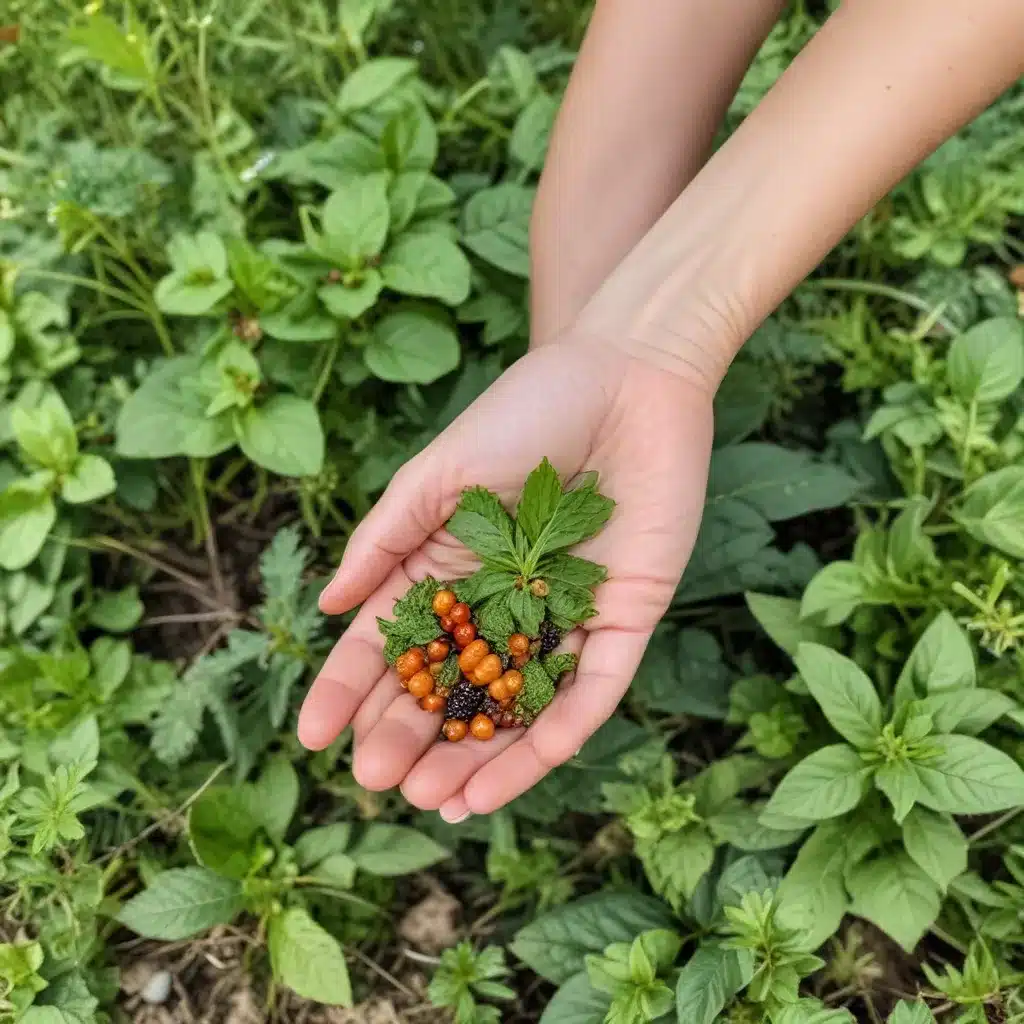
As a farm educator at Crooked Pines Farm, I take great joy in sharing the abundance of wild edibles that flourish all around us. Whether you’re a seasoned forager or new to the practice, discovering the tasty and nutritious plants that grow freely on our land can be a true delight – and a powerful way to reconnect with the natural world.
Identification of Wild Edibles
The first step in successful foraging is being able to confidently identify edible plants. Our farm grounds are home to a diverse array of flora, from the ubiquitous dandelion and purslane to the lesser-known but equally delicious stinging nettle, chickweed, and wood sorrel. Learning to recognize these wild greens, as well as distinguishing them from any poisonous look-alikes, is crucial for safe and sustainable harvesting.
One of my favorite resources is the book “Foraging & Feasting” by Dina Falconi, which features beautifully illustrated plant maps detailing the seasonal growth, habitat preferences, and culinary uses of 50 common edible species. Knowing when and where to find each plant is key – for example, we see chickweed flourishing in the early spring, while stinging nettle reaches peak season in the summer. Staying attuned to these rhythms allows us to make the most of nature’s bountiful offerings throughout the year.
Ethical Foraging Practices
Of course, foraging requires a delicate touch. We must be conscious stewards of the land, harvesting in a way that supports the long-term health and balance of the ecosystem. Falconi emphasizes the importance of “conscious harvesting,” taking inventory of plant populations and modulating our picking based on each species’ growth patterns. Some, like the prolific purslane, can handle more aggressive harvesting, while others, like the slower-growing ramps, need a gentler touch.
Equally crucial is obtaining permission to forage, whether on public or private property. Crooked Pines Farm has designated safe foraging zones that are free from potential contaminants like pesticides or heavy metals. We encourage visitors to explore these areas responsibly, leaving no trace and ensuring the sustainability of our wild food sources for generations to come.
Culinary Applications
Once you’ve honed your foraging skills, the culinary possibilities are endless. I love incorporating wild greens into fresh salads, sautéing nettles with garlic for a nutritious side dish, or blending purslane into smoothies for a tangy, omega-3-rich boost. For longer-term preservation, we make wild fruit catsups, herbal vinegars, and wild-infused honey – all of which showcase the unique flavors of our foraged bounty.
One of my personal favorites is an elderberry syrup that we use to support immune health, especially during the colder months. By harvesting the berries from our farm’s elderberry bushes, we can ensure the quality and provenance of this powerful herbal preparation.
The Farm Ecosystem
Foraging is deeply intertwined with the overall health and biodiversity of our farm. The presence of wild edibles indicates a thriving, balanced ecosystem, one that supports a variety of beneficial insects, pollinators, and other wildlife. By cultivating patches of these nutritious plants, we not only enhance the visual appeal of our grounds but also provide valuable food and habitat for the creatures that call Crooked Pines home.
Our farm manager, Lincoln, has even incorporated native edible species into our permaculture-inspired food forest. This diverse, multilayered planting showcases the incredible productivity that can arise when we work in harmony with nature, rather than against it. Visitors are always delighted to discover pawpaws, persimmons, and other rarely seen wild fruits hiding among the lush foliage.
Nutritional Benefits of Wild Edibles
Beyond the sheer joy of foraging, there are tremendous nutritional benefits to incorporating wild edibles into our diets. Many of these plants are veritable powerhouses of vitamins, minerals, antioxidants, and phytochemicals – far surpassing the nutritional profiles of their cultivated counterparts.
For example, the humble dandelion leaf is packed with beta-carotene, vitamin C, calcium, and iron, making it an excellent tonic for the liver and digestive system. Nettles, meanwhile, are renowned for their anti-inflammatory properties and high protein content. By weaving these nutrient-dense ingredients into our meals, we can amplify the holistic health benefits of our food.
Connecting with the Land
Perhaps most importantly, the act of foraging reconnects us to the land in a profound way. As we move through the farm, using our senses to identify edible plants, we become deeply attuned to the rhythms and patterns of the natural world. The sight of a cluster of ripe elderberries, the smell of freshly crushed wild mint, the taste of a sun-warmed raspberry – these sensory experiences foster a sense of mindfulness and reverence that is all too rare in our modern, industrialized food system.
By honoring the cultural and historical significance of foraging, we also keep alive the traditions of our ancestors, who were intimately familiar with the edible bounty that thrived all around them. At Crooked Pines, we strive to share this ancestral knowledge with our visitors, especially the younger generation, empowering them to develop a deep, abiding connection to the land.
Whether you’re a seasoned forager or just beginning to explore the world of wild edibles, I encourage you to embrace the gifts that nature has so generously provided here at Crooked Pines Farm. By nurturing this connection, we not only nourish our bodies but also our souls, reconnecting with the rhythms of the land in a way that is truly life-changing.


